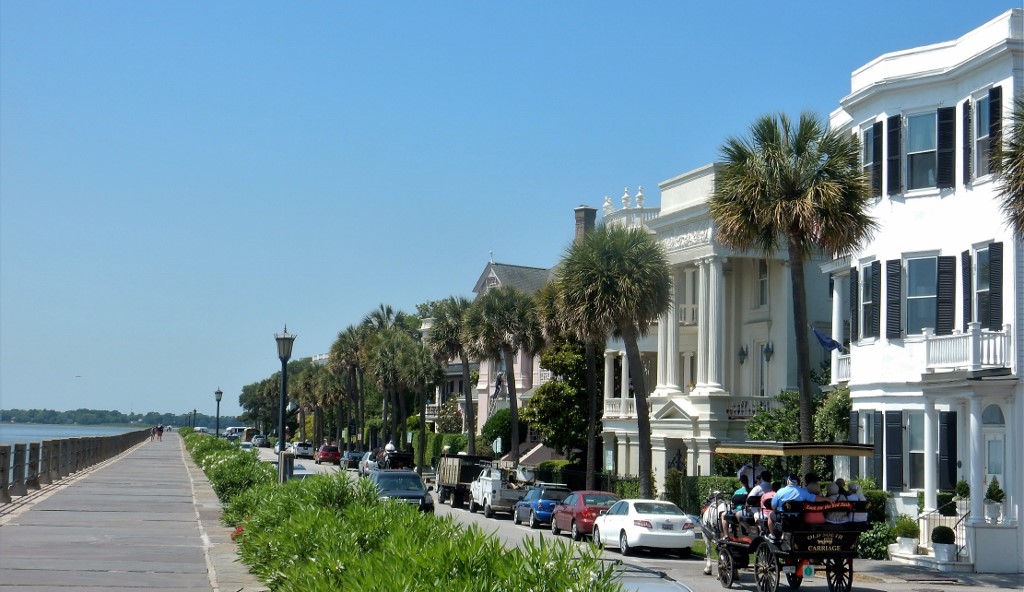Visit for a weekend, visit for a week, you won’t begin to see all there is to see in Charleston. This city on South Carolina’s sunny Atlantic shore is a living museum of history, as well as a vibrant and cultured modern city with incredible natural beauty. Antebellum architecture, Early American history, Civil War history, civil rights history and activism, Southern music, art, design and music are all present here. Come explore with me.
Tour Charleston’s Historic Homes and Churches
Grab a city guidebook from the downtown Visitor Center. Explore the historic antebellum homes and other landmarks. The homes are beautiful to see; strolling the streets of this walled city in the American South makes for a great day in itself.
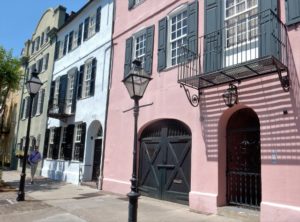
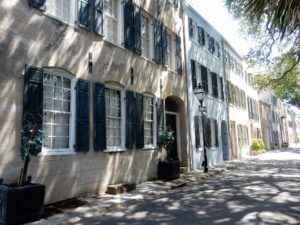
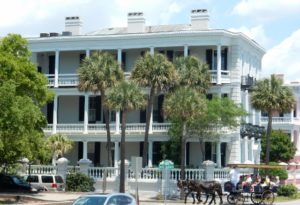
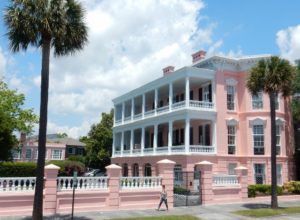
No visit to Charleston is complete without touring one or more of the renovated and restored mansions or one of the historic churches. The tours are not just about the antebellum architecture and silver tea sets; each share history of how the city economy developed and how slaves and working free people built the city and lived.
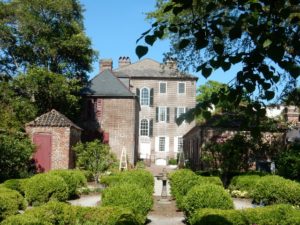 On my visit, I toured the Edmonston-Alston House, the Heyward-Washington House, and the Aiken-Rhett House Museum, giving me a good range of time periods from late 18th through the early 19th century, as well as later years as the homes changed hands. Many of Charleston’s churches are noteworthy as well, including the Huguenot Church, St. Michael’s Episcopal Church, and the Unitarian Church.
On my visit, I toured the Edmonston-Alston House, the Heyward-Washington House, and the Aiken-Rhett House Museum, giving me a good range of time periods from late 18th through the early 19th century, as well as later years as the homes changed hands. Many of Charleston’s churches are noteworthy as well, including the Huguenot Church, St. Michael’s Episcopal Church, and the Unitarian Church.
Telling the Story of Slavery and Civil Rights
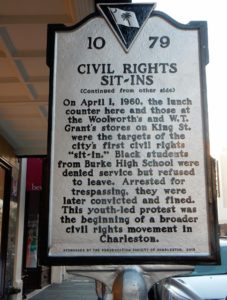 Charleston does not shy away from the shameful past of slavery and there are many opportunities to learn. Visit the Old Slave Mart Museum; the exhibits give an expansive history of slavery as well as the birth of the civil rights movement. Learn more about the Gullah people, descendants of enslaved Africans who lived in the Lowcountry regions from Georgia to northeast Florida. The Charleston Visitor Center features a film called, “Forever Charleston” and the boat boarding area for Fort Sumter has an excellent exhibit that discuss this period of Charleston’s history.
Charleston does not shy away from the shameful past of slavery and there are many opportunities to learn. Visit the Old Slave Mart Museum; the exhibits give an expansive history of slavery as well as the birth of the civil rights movement. Learn more about the Gullah people, descendants of enslaved Africans who lived in the Lowcountry regions from Georgia to northeast Florida. The Charleston Visitor Center features a film called, “Forever Charleston” and the boat boarding area for Fort Sumter has an excellent exhibit that discuss this period of Charleston’s history.
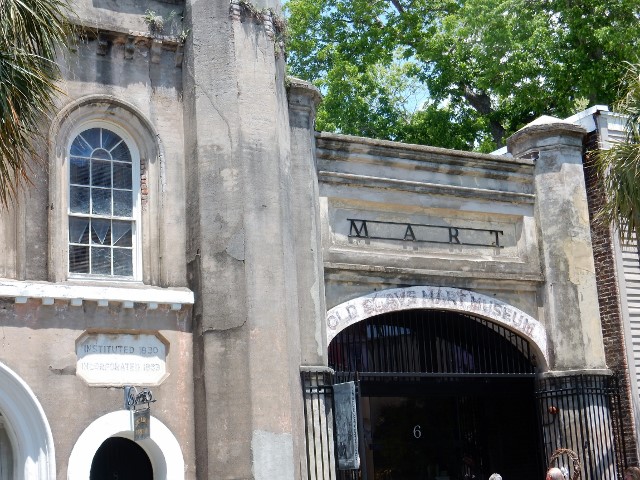
Old Slave Mart Museum
Fort Sumter
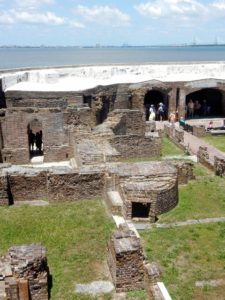
Fort Sumter.
The Civil War began at Fort Sumter; opening shots were fired on April 12, 1861 by southern forces. Confederate troops fired on the fort, and only 34 hours later, Union forces surrendered. The fort allowed Confederate troops to defend Charleston until April 14, 1865, when General Sherman’s troops again raised the U.S. flag. The fort sustained considerable damage during the Civil War and hasn’t been brought back to it’s original design; all the better to get a sense of time and place. The interpretive signage and ranger talks are well-done.
The site is accessible only by boat and is a great way to be on the water. Sit back and enjoy the views of the Arthur J. Ravenel Jr. Bridge, the mansions along Battery Street, and more. Your ticket allows you to return when you want. Ferry sailings are every hour, and you can return after one or two hours.
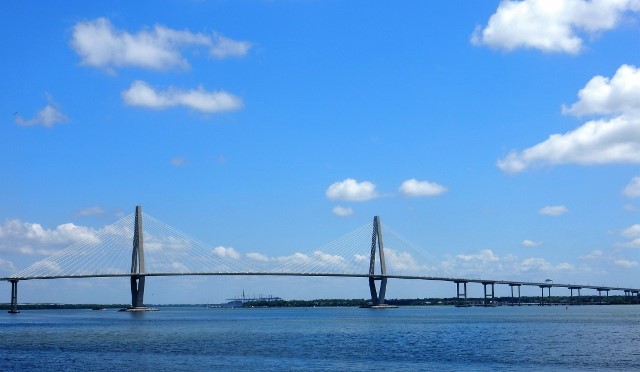
Arthur Ravenel Jr. Bridge.
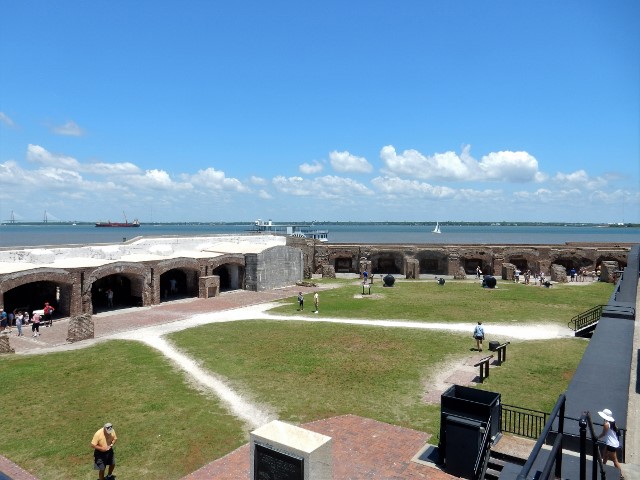
Explore Fort Sumter at your own pace.
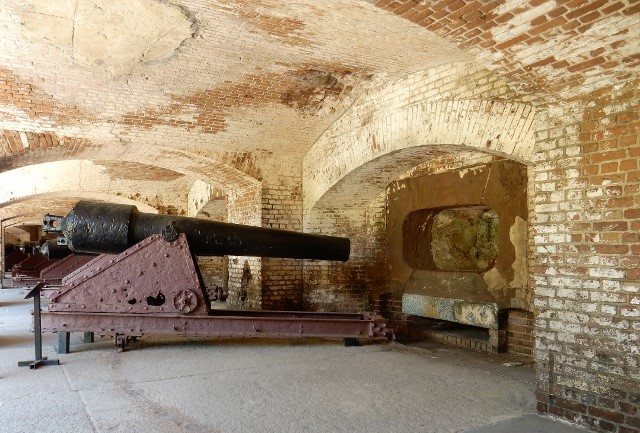
Cannons at Fort Sumter.
South Carolina Aquarium
Perfect for families or aquarium aficionados like myself, the South Carolina Aquarium has some wonderful exhibits that let you you learn more about local fresh and saltwater areas, as well as more far-flung locales. It’s right next door to where you’ll board the ferries for Fort Sumter (and a bonus if you need to get out of the heat for a bit.)
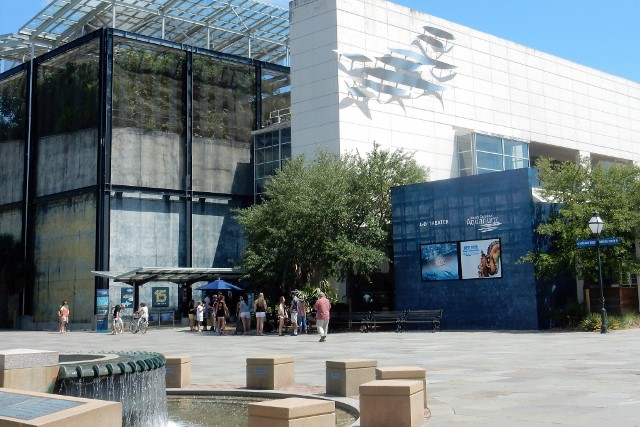
South Carolina Aquarium has excellent exhibits about local fresh- and saltwater waterways.
Stroll, Shop, and Eat
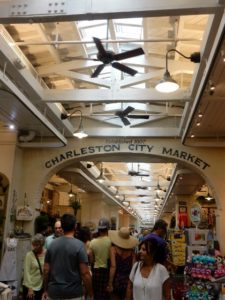
Charleston City Market is the place to shops for souvenirs and gifts.
If you really want something to remember Charleston by, bring home a Gullah sweetgrass basket. Finely crafted, they’re beautiful and functional and offer a bit of history–they’re one of the oldest handcrafts of African origin found in the U.S. A good place to buy is at the Charleston City Market, where you can chat with and watch the artists at work. Other good bets: South Carolina-grown Gold Rice from Carolina Plantation Rice and tea from South Carolina grown tea from Charleston Tea Plantation. Wander through a plethora of shops selling home goods, gourmet food items, and more.
The downtown core, especially up and down Broad Street and Queen Street has some wonderful antique stores and art galleries. King Street offers just the right clothing boutiques and jewelry stores to allow you to blend in with well-heeled locals. Re-fortify with a snack at Caviar & Bananas, a gourmet cafe and market, and Artisan Meat Share, a local charcuterie shop and sandwich shop.
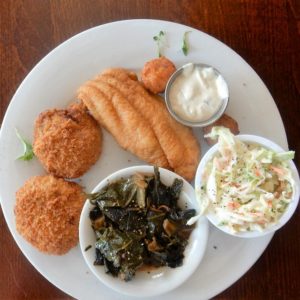
Fried catfish, crab cakes, greens and slaw
You’ll eat well in Charleston, whether you go for Lowcountry classics like shrimp and grits, crab, oysters, fried chicken or catfish with greens, slaw, or red rice at a neighborhood cafe or a beach-side crab shack, or updated and elegant takes on these same classic dishes. Wherever you go, don’t skip the honey butter for your biscuits. While you may or may not be able to get into Chef Sean Brock’s Husk, there are plenty of great dining options. For cocktails, Proof, on King Street is a great spot.
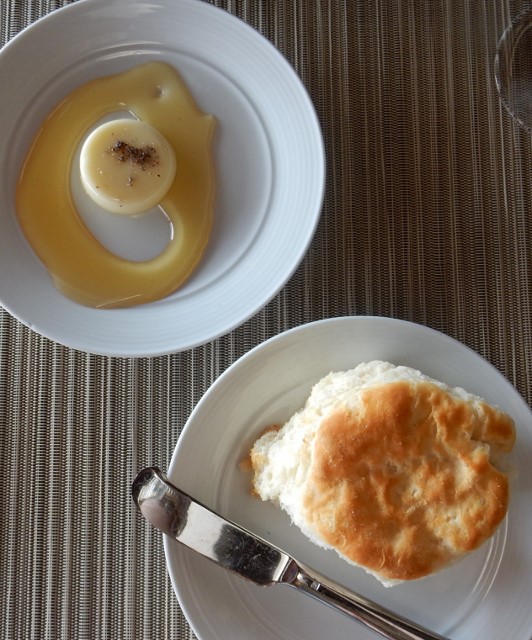
Don’t miss a flaky biscuit with honey butter.
Hit the Beach
You don’t have to leave town to visit some of the state’s best waterways and beaches. Kiawah Island, Seabrook Island, Bull Island, Edisto Beach, Sullivan’s Island, Isle of Palms and Folly Beach are all excellent places to spend some time in the sand and sun. I stayed in Folly Beach, just a 10 minute drive from downtown (avoiding rush hour). Fish or crab off the 1,045-foot long fishing pier, body surf, kite surf, pine after the beachfront homes, comb the beach for shells.
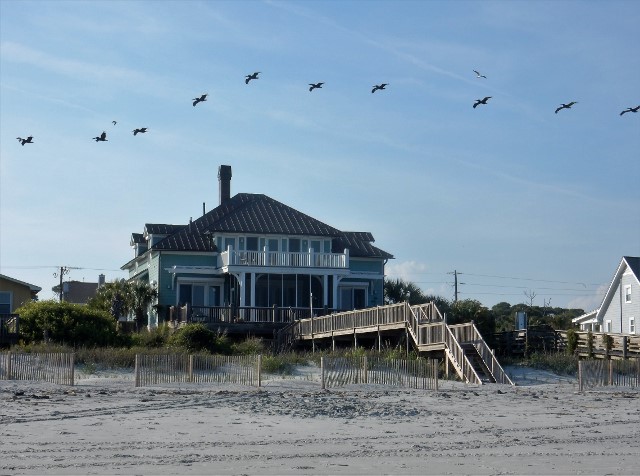
Folly Beach beachfront home.
Explore funky beach shack restaurants and bars, many of which, offer live music. Watch the sunset with a cocktail or dinner at the waterfront Blu Restaurant and Bar, where you can sit inside or outdoors on the large patio. Folly Beach has is all.
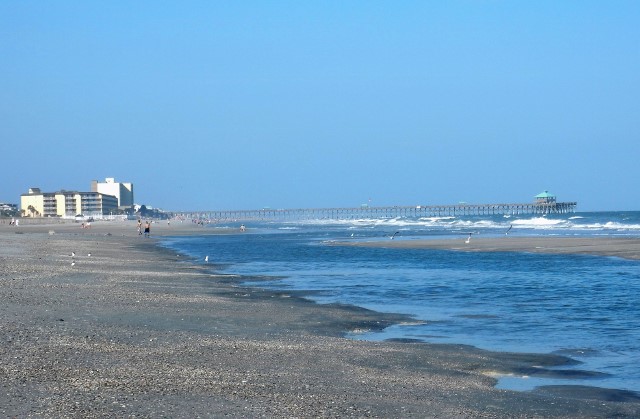
The 1,045-foot long Folly Beach Fishing Pier.
Beyond the City
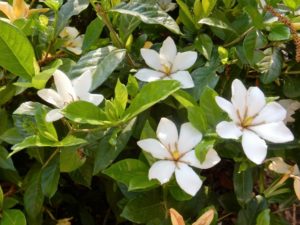
Magnolias in bloom.
As much as this article covers, there’s so much more beyond the city, including the Magnolia Plantation and Cypress Gardens, as well as great opportunities for outdoor water sports. I also enjoyed Charles Towne Landing, the 664-acre where the state’s first English settlement developed beginning in 1670. I spent time talking with a docent who shared his considerable knowledge of the region, while he cut and sewed a leather knife sheathe. He told me about the oak tree species in the area and about Spanish moss. (It’s not a moss at all, it’s actually a bromeliad.) There’s a new interpretative center, seven miles of trails, a replica of a 17th century trading vessel, a Native American center, an early African-American graveyard, and more.
As much as this article covers, there so much more beyond the city, including plantations and gardens. A couple of the most popular are Magnolia Plantation, the Boone Hall Plantation and Cypress Gardens.
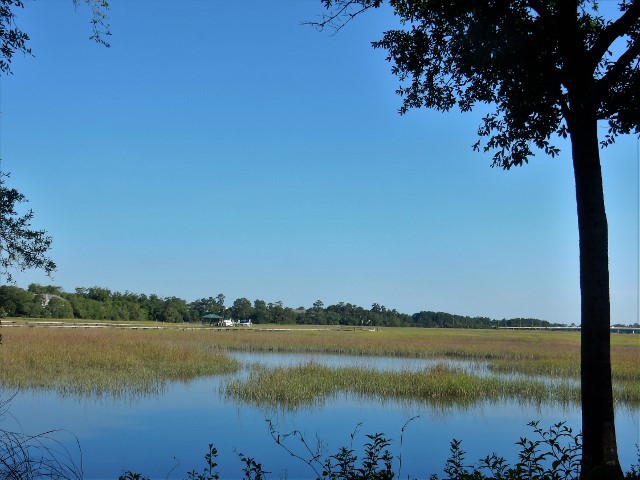
Natural beauty is found just everywhere in the Charleston area.
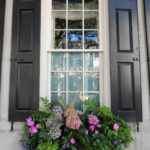 With all that Charleston has to offer, it’s no wonder the city consistently makes every travel “Best of” list out there. A weekend or a week, you’ll fall in love with Charleston and yearn for a return visit.
With all that Charleston has to offer, it’s no wonder the city consistently makes every travel “Best of” list out there. A weekend or a week, you’ll fall in love with Charleston and yearn for a return visit.
For More:
- Explore Charleston, www.charlestoncvb.com/
- Proof, www.charlestonproof.com/
- Artisan Meat Share, www.artisanmeatsharecharleston.com/
- Caviar & Bananas, www.caviarandbananas.com
- Husk, www.huskrestaurant.com/home/
- At Home, www.athomecharlestoncitymarket.com
- Carolina Gold Rice, www.carolinaplantationrice.com/
- Charleston Tea Company, www.charlestonteaplantation.com/
- Blu, www.blufollybeach.com/
- Charles Towne Landing, www.southcarolinaparks.com/
- Charleston Home Tours, www.historiccharleston.org/
- Old Slave Mart Museum, www.oldslavemartmuseum.com/
- Charleston Museum, www.charlestonmuseum.org/
- Fort Sumter, www.nps.gov/fosu/index.htm
On Our Site:
- Weekender’s Guide to Charleston
- Charleston’s Cocoa Academic: A Leader in the Bean to Bar Movement
- Anchors Away! See Charleston From the Water
- Best Charleston Outdoor Activities
-All photos by Nancy Zaffaro.

